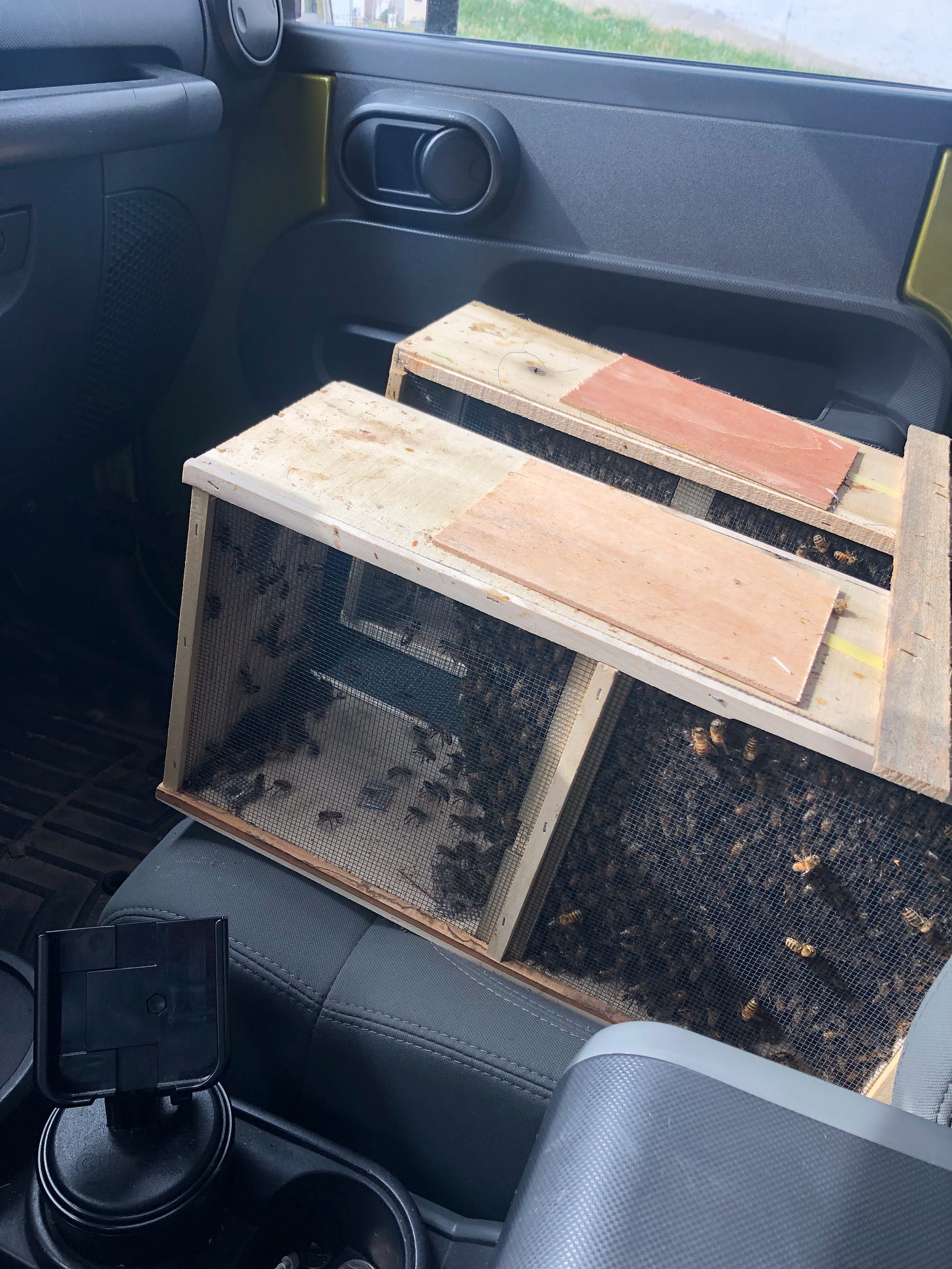This is another in a continuing series of posts that follow the beekeeping column I recently concluded with the Boyertown Bulletin. It was a lot of fun to write about one of my favorite subjects for a local audience.
Buying Bees | BEE SPACE - January 2024
It’s time to order some bees!
In previous columns, we’ve covered apiary placement and some of the guidelines a beekeeper like me followed when setting up his first hives. Today, we’re going to talk about ordering bees, because like everything else in beekeeping, timing is crucial. Most orders for bees happen between January and March, for delivery in March to May, so it pays to be on top of this stuff.
Honey bees ordered for a hobbyist come in two forms: packages, and nucleus hives. You have several considerations with both, so we’ll cover each in turn.
Packages: A “package” of bees is a wooden box, about the size of a shoebox, carrying roughly three pounds of worker bees (and an occasional male drone), along with a queen imprisoned in a cage. The worker bees may or may not know each other, as packages are often thrown together from productive hives. But importantly, the worker bees do not know the queen – the imprisonment is for her benefit. The escape for the queen comes in the form of a candy plug at one end of her prison. In the time it takes for the worker bees to eat that piece of candy, they’ll have gotten used to the queen. Worker bees desperately want the soothing matronly pheromones of a queen bee, and I have never had them not accept a queen after the candy-prison-break.
The package is how I got started and how most beekeepers get started. They usually run from $125-150 a package, with each package corresponding to each hive. As we mentioned in a previous column, you’ll want at least two hives to start. One advantage of packages over nucleus hives, which we’ll cover in a minute, is that they can be installed quite early. In 2023, I installed two packages in March, because we had such a mild spring. In a later column, we’ll cover how to install packages. But there is another way to buy bees that you might consider, especially if you are more patient than I am and don’t mind waiting a few months into the spring.
To see what it’s like to have bees dumped on your face from a package, see my video here.
Nucleus hives: As the name suggests, the nucleus hive acts as the “core” of a thriving beehive. Unlike a package, a nucleus hive already has an accepted queen. The nucleus is usually made up of five fully active frames from a successful hive: it will have brood, which is what we call baby bees; it will have pollen and honey, the two food groups for bees; and it will have a complement of workers ready to expand, and expand quickly. While nucleus hives arrive much later – often in May or so – and cost nearly twice as much as a package, they do have a major advantage over the package, which is that they move fast. The workers will already have their division of labor parsed out and a new generation of bees will already be in production. Nucleus hives are strong from the get-go, while a package may take longer to establish itself.
What’s important is to get your order in at the beginning of each year. I usually order two packages each year as a matter of course: if I lose bees (and I do lose bees each year), I will be able to restart the apiary. The Pennsylvania State Beekeepers Association maintains an excellent map of members with honey bees for sale: https://www.pastatebeekeepers.org/Buy-Honey-Bees.
Will Caverly is the author of the beekeeping thriller Here, the Bees Sting and lives in Chester County with his family. Find more of his work at www.willcaverly.com. He loves to get questions at will.caverly@gmail.com.




Catching up on your posts. Cool!